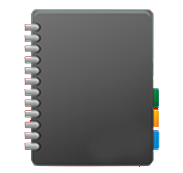Explanation

Eportfolios provide a personal space where students can select, organise and showcase their work. They can be used in a variety of ways to present evidence of learning to a selected audience.
‘An ePortfolio is a purposeful aggregation of digital items – ideas, evidence, reflections, feedback etc which presents; a selected audience with evidence of a persons learning and/or ability; Sutherland, S. and Powell, A. (2007), Cetis SIG mailing list discussions [www.jiscmail.ac.uk/archives/cetis-portfolio.html] 9 July 2007
The primary aim of an ePortfolio may be to present evidence for summative assessment to demonstrate achievement, to record progress or to provide a space for personal development and reflective learning.
Benefits of Using ePortfolios
Like traditional portfolios, ePortfolios can facilitate reflection and can be used as a means to motivate and engage learners in a learning model appropriate to a digital age.
ePortfolios can be used to:
- Develop and present a portfolio of work.
- Present a reflective account of learning.
- Keep evidence of transferable skills gained.
- Support job applications and applications for professional accreditations.
- Help with self-assessment of learning performance.
- Provide evidence of academic progress.
- Prepare a project / assignment for assessment / evaluation.
Hands-on sessions can benefit learners new to ePortfolios and help to assess a learners’ ability to work independently.
Tips/Good Practice
- Encourage the personalisation of ePortfolios to motivate and engage learners.
- Use scaffolded tasks and templates for ePortfolios to develop learners’ ability to present their content.
- Use feedback to help learners to overcome difficulties and develop their reflective capabilities.
Useful Links to websites or Resources for Brightspace
References to Scholarly Articles

Ephraim A. Okoro, Melvin C. Washington, Peter W. Cardon. (2011). EPortfolios in Business Communication Courses as Tools for Employment. Volume: 74 issue: 3 page(s): 347:351.

Tracey Hooker. (2017). Transforming teachers’ formative assessment practices through ePortfolios. Volume 67, October 2017, Pages 440-453.

Chi-Cheng Chang (2014) Using e-portfolios to elevate knowledge amassment among university students. Volume 72, March 2014, pages 187-195.

Rosângela Minardi Mitre Cotta, Glauce Dias da Costa, & Mendonça, É. T. (2013). Reflective portfolio: A proposal for teaching and learning geared on competencies. Ciência & Saúde Coletiva, 18(6), 1847.

James Cousins (2016). Student Assessment and the ePortfolio. Volume 28, issue 2.